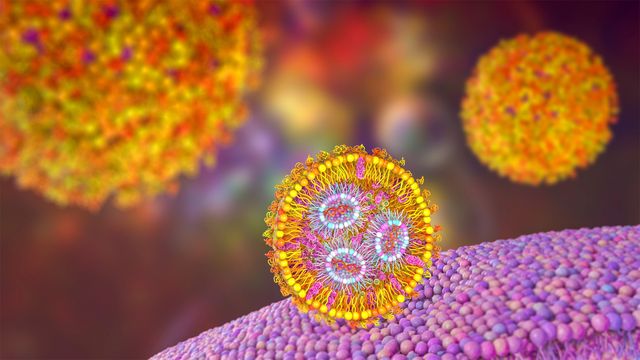Patching holes, safer RNA delivery
LNPs enter cells with the help of endosomes, tiny sacs which help direct material entering cells to the right places. The research team found that when LNPs are delivering their “load” of RNA, the endosomes rupture like a burst balloon, allowing harmful substances to leak out and spark immune responses. These holes are detected by proteins called galectins, which drive inflammation.
Scientists found that adding a special fat molecule, 4A3-SC8, makes smaller holes that the cell can quickly patch up, reducing inflammation while keeping RNA delivery effective. In other words, the endosome springs a leak and the fat molecule can fix it.
They also discovered that a readily available but uncommon drug called thiodigalactoside (TG) can block inflammation when added to LNPs. TG is normally used to treat inflammation and cancer.
These strategies proved transformative in a mouse model of acute respiratory distress syndrome (ARDS), a common disease where fluid builds up in the lungs and oxygen levels drop to dangerous levels. Using either new treatment, the team delivered mRNA to treat the ARDS, which dramatically reduced lung inflammation and tissue damage without the harmful side effects typically caused by LNPs.
A step forward for RNA
“By designing LNPs that cause less damage and block inflammation pathways, we can expand RNA treatments to conditions like ARDS, heart attack, and stroke, where inflammation is a major challenge,” Brenner said.
He points out that these findings don’t mean COVID-19 vaccine LNPs cause harmful inflammation. “Vaccines rely on LNPs to stimulate the immune system throughout the body, which is key to their success, but this immune activation can worsen conditions like stroke or ARDS when LNPs are used as treatments,” Brenner explained. “Our study shows how to make LNPs safer for such diseases by reducing unwanted inflammation.”
The findings mark a significant step forward for RNA therapeutics, which have shown promise in treating cancers, genetic disorders, and now inflammatory diseases.
“This represents meaningful progress for RNA-based therapeutics,” said first author Serena Omo-Lamai, a PhD student researcher. “Our approaches could make LNPs safer and more versatile, opening doors to treat inflammatory diseases that were previously out of reach.”
Reference: Omo-Lamai S, Wang Y, Patel MN, et al. Limiting endosomal damage sensing reduces inflammation triggered by lipid nanoparticle endosomal escape. Nat Nanotechnol. 2025. doi: 10.1038/s41565-025-01974-5
This article has been republished from the following materials. Note: material may have been edited for length and content. For further information, please contact the cited source. Our press release publishing policy can be accessed here.
